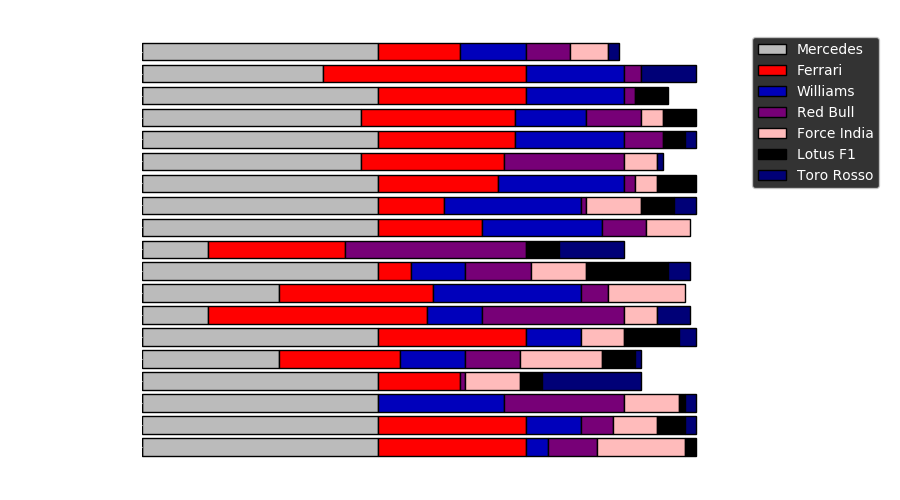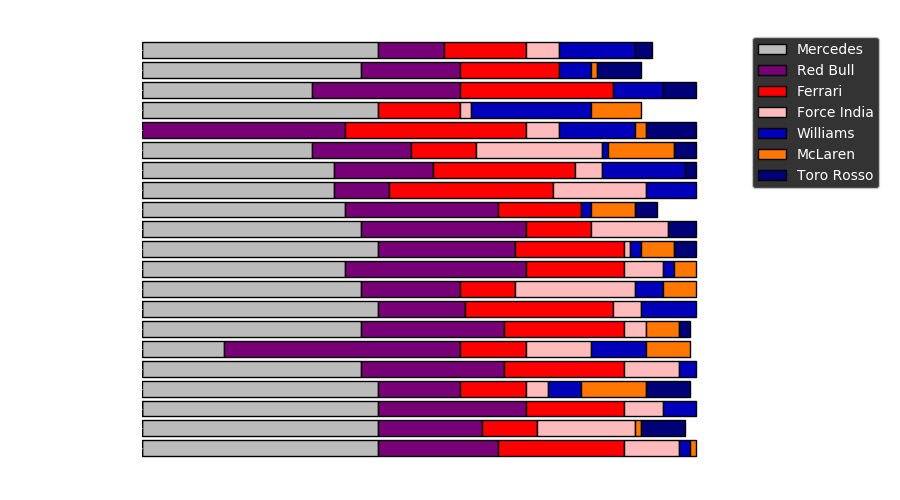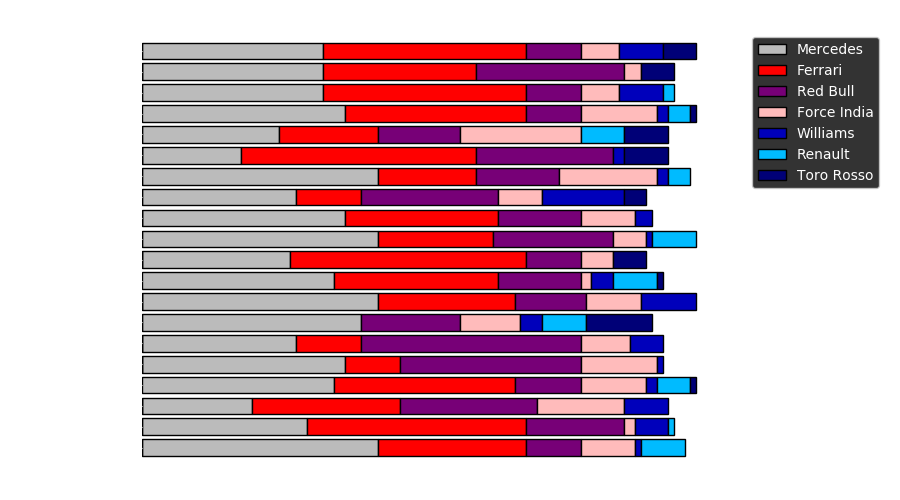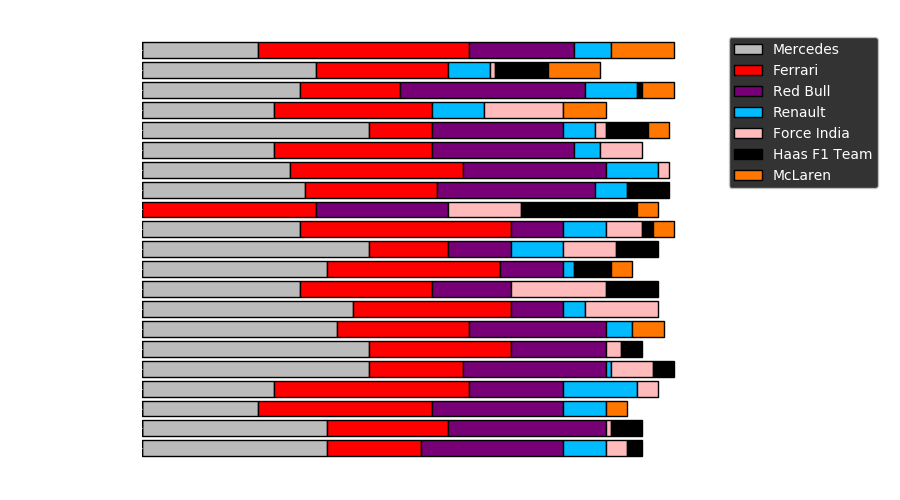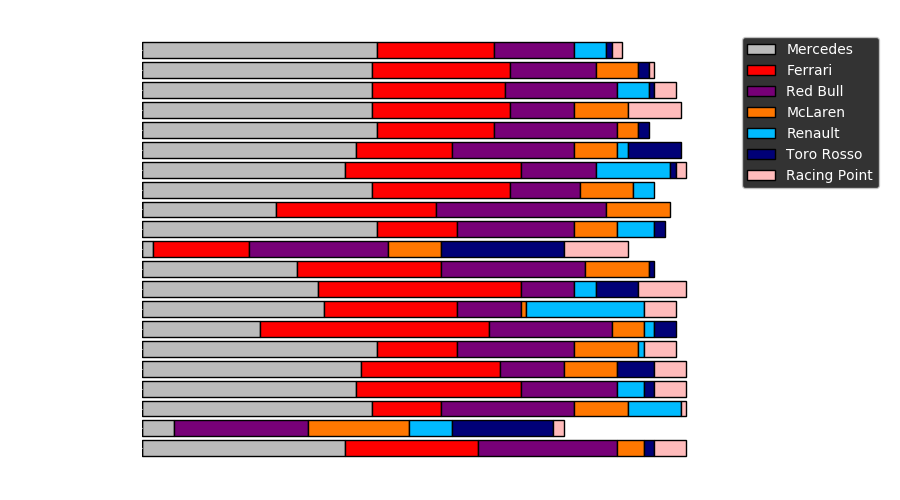Concours d'Elegance
hot starts
How much faster are the fastest cars?
lights out

away we go
lap gaps
What's an undercut?
under the rainbow
Seb and Max undercut Lewis by making early pit stops. Seb also undercuts his teammate Charles.
Seb and Max both stop on lap 19. With fresh tires, they are much quicker than the leaders. Charles stops on lap 20, and Seb overtakes as he exits the pits.
Lewis now leads, but his tires are worn. Seb, Charles, and Max are catching him. After Valtteri stops on lap 22, he is also quicker than Lewis. Lewis finally pits on lap 26 and rejoins the race in 4th place.
The cost of stopping early comes later in the race: Seb, Charles, and Max will have relatively old tires at the end. In this race, 3 safety cars made tire conservation relatively easy, and the close confines of a street circuit made overtaking difficult.
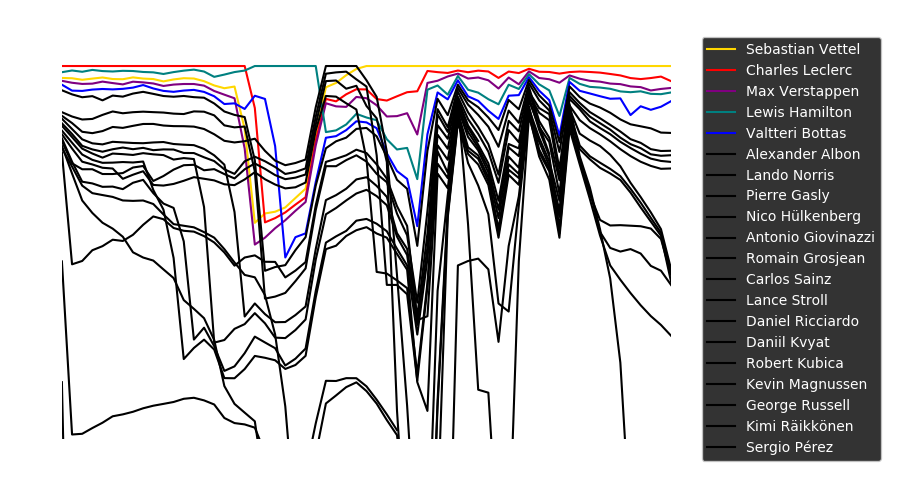
garde le pour toi
Teammates Lewis and Valtteri attack the leader with two different strategies. Charles must defend against Lewis undercutting him and Valtteri catching him late in the race.
Charles, Valtteri, and Lewis start on fast, but short-lived, soft tires. Lewis stops for medium tires on lap 19. Charles stops for hard tires on lap 20 and rejoins the race just ahead of Lewis.
Charles' hard tires will last longer, but Lewis has more grip for now. Charles struggles to stay ahead and is warned by the stewards for unsportsmanlike driving, but he manages to keep Lewis behind him.
After Valtteri stops for medium tires on lap 27, he is faster than anyone. On lap 42, he passes Lewis, whose tires are now badly worn. Lewis salvages a point by stopping again for soft tires and setting the fastest lap. Valtteri catches Charles, but the race ends before he can overtake.

maximum overdrive
Max goes long, making no attempt to undercut the leaders.
Max qualifies 2nd but drops to 8th at the start. By lap 9, he is 5th and catching the leaders. Seb and Valtteri pit on lap 22, then Charles on lap 23. Max and Lewis both stay out, effectively saying: Go ahead and undercut us. We'll pass you later when your tires wear out.
Lewis suffers wing damage from a kerb and stops on lap 31. Max inherits the lead, then stops on lap 32 and rejoins in 4th. Max now has fresher tires than the leaders, but he must pass 3 people to win.
Charles, Valtteri, and Seb pay a price for stopping early. Each driver must either stop again or manage the tires for almost 50 laps. Seb pits a second time after Max passes him on lap 50. Valtteri stays out, and Max passes him on lap 56. Charles retains the lead until Max pushes past him on lap 69.
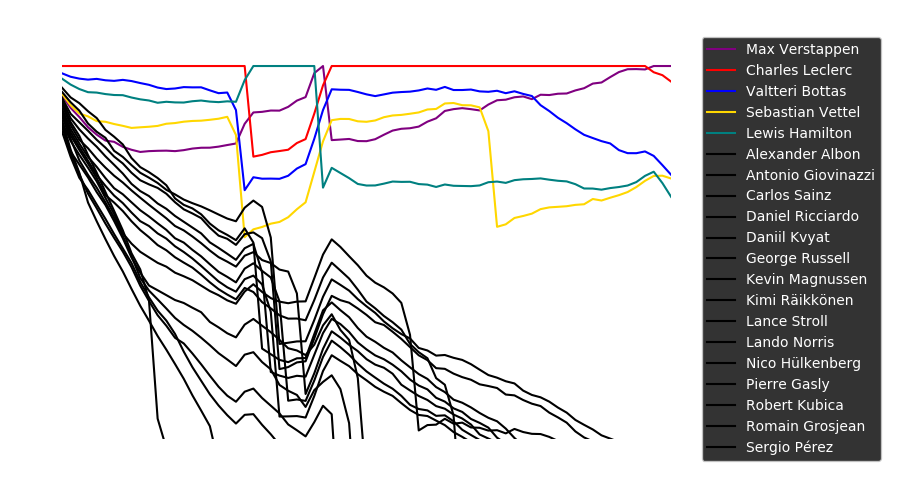
finnish line
Valtteri puts himself in Kimi's way to help Lewis catch up.
Lewis and Kimi overtake each other after an early safety car. Kimi retains the lead and pits early on lap 20, possibly to prevent Lewis from undercutting him. Lewis stops for tires on lap 28.
Lewis exits the pits several seconds behind Kimi. Valtteri, who has not stopped yet, stays out on badly worn tires. Kimi finally passes Valtteri, but now Lewis is close behind him.
Valtteri stops on lap 36 and emerges behind Max. Lewis has fresher tires than Kimi, who cannot stop again without losing the lead. Kimi defends until Lewis finally outbrakes him late in the race.
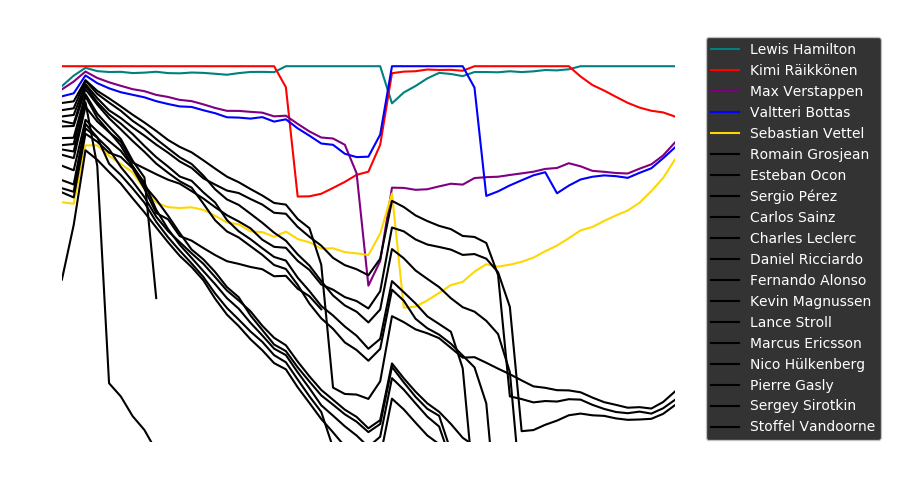
over easy
Refueling adds another dimension to race strategy. The weight of a full tank can make cars slower after a pit stop, even with fresh tires. Instead of undercutting, drivers can overcut by stopping later.
After an early safety car, Michael's left rear tire is punctured by Giancarlo's front wing. Michael drops to last place. Felipe leads, with everyone else far behind.
When Kimi stops, Fernando stays out and runs quick laps with a light fuel load. Jenson does the same. After their stops, Fernando is ahead of Kimi, and Jenson is close behind.
Fernando stops late again at the next round of pit stops, preventing anyone else from overcutting him. Meanwhile, Michael climbs back to 4th. Felipe's pace is so quick that he wins easily.
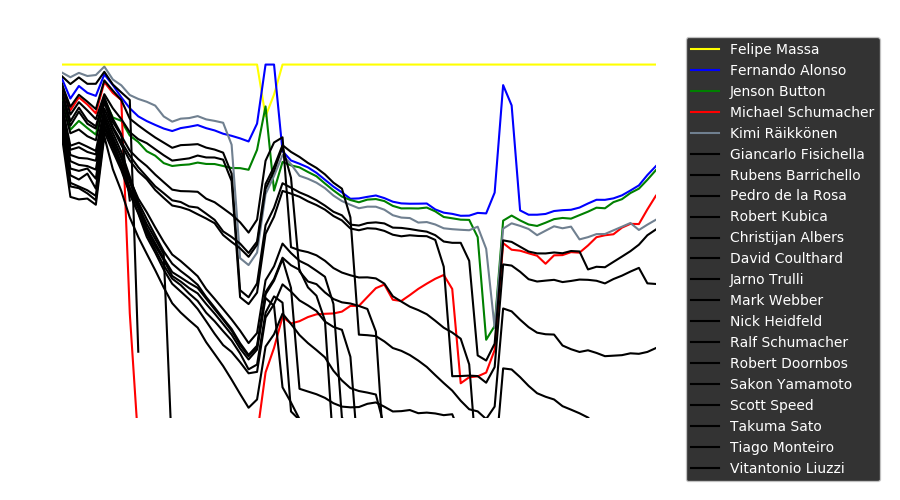
box box box
How long does a pit stop take?
stoppage time
stowe your roll
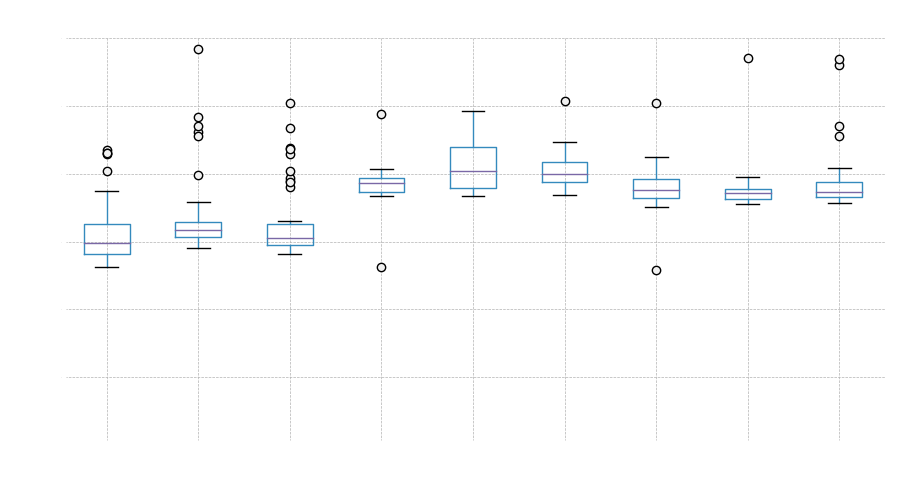
yas we can
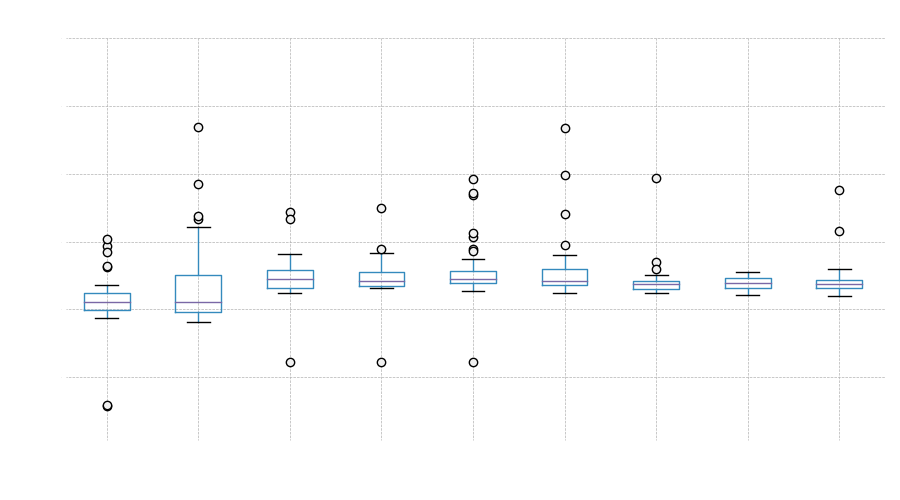
paul ralentit
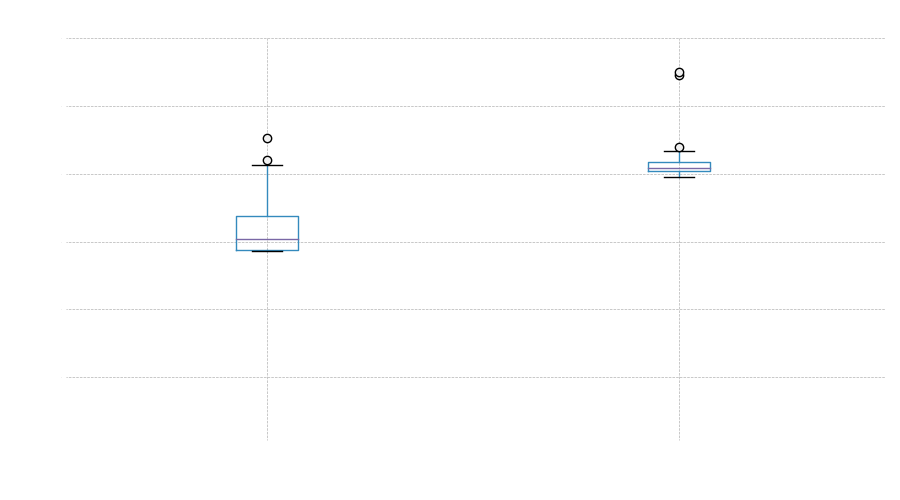
home runs
Are the cars getting faster?
velocità dell'italia
geschwindigkeitheim
lauf der stiere
force canada
giro volante
When do drivers set their fastest laps?
open catalan

spoon benders
casino royale
acelerando do lago
rapidité de l'eau rouge
golden years
Are drivers getting younger?
all-ages shows
People aged 18-53 have won F1 races. About half of all winning drivers were between 28 and 34 years old.
This density estimate is fairly smooth below 30 but visibly distorted for older drivers. Densities for 2nd and 3rd-place finishers are similar but slightly younger.
good old boys
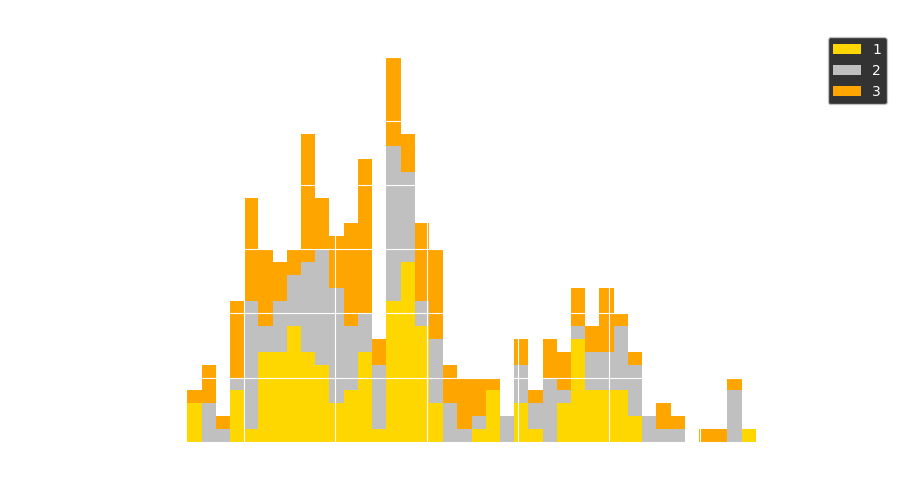
generation ickx
da silva foxes
centurions
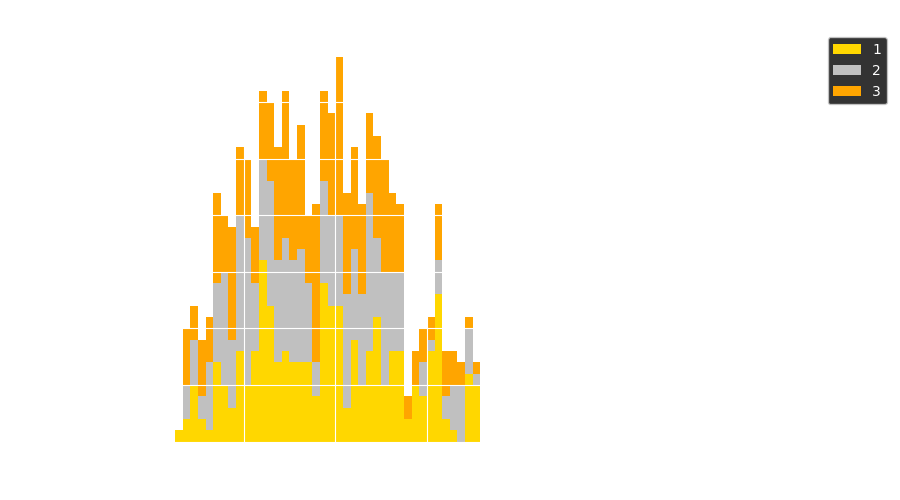
electric youth
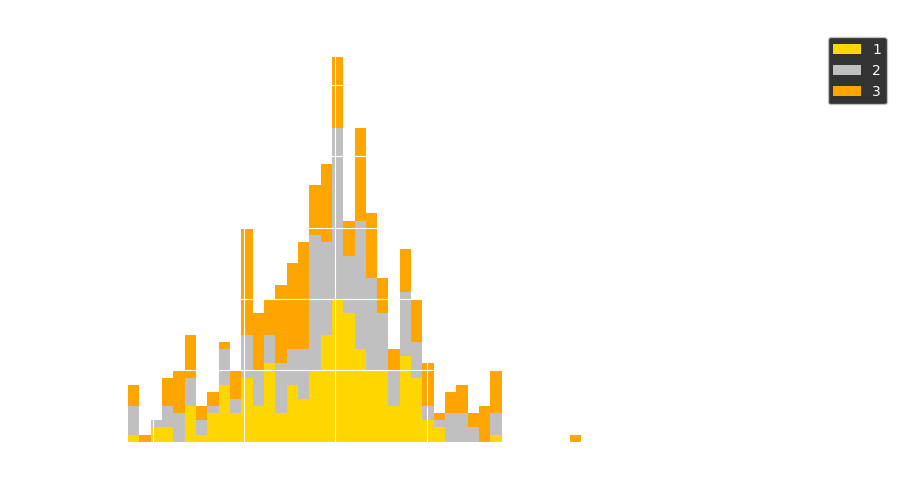
over the hills
| age | date | driver | order | |
|---|---|---|---|---|
| 1 | 53.057 | 1951-07-01 | Luigi Fagioli | 1 |
| 2 | 50.795 | 1950-05-21 | Louis Chiron | 3 |
| 3 | 49.996 | 1953-06-07 | Felice Bonetto | 3 |
| 4 | 48.914 | 1955-09-11 | Piero Taruffi | 2 |
| 5 | 48.597 | 1955-06-05 | Nino Farina | 3 |
| 6 | 46.209 | 1957-09-08 | Juan Fangio | 2 |
| 7 | 44.830 | 1955-07-16 | Karl Kling | 3 |
| 8 | 44.616 | 1950-06-18 | Louis Rosier | 3 |
| 9 | 44.329 | 1953-09-13 | Luigi Villoresi | 3 |
| 10 | 44.293 | 1970-07-18 | Jack Brabham | 2 |
| age | date | driver | order | |
|---|---|---|---|---|
| 1 | 18.623 | 2016-05-15 | Max Verstappen | 1 |
| 2 | 18.656 | 2017-06-25 | Lance Stroll | 3 |
| 3 | 21.202 | 2008-09-14 | Sebastian Vettel | 1 |
| 4 | 21.248 | 2015-07-26 | Daniil Kvyat | 2 |
| 5 | 21.443 | 2014-03-16 | Kevin Magnussen | 2 |
| 6 | 21.454 | 2019-03-31 | Charles Leclerc | 3 |
| 7 | 21.648 | 2003-03-23 | Fernando Alonso | 3 |
| 8 | 21.758 | 2006-09-10 | Robert Kubica | 3 |
| 9 | 21.788 | 1997-04-13 | Ralf Schumacher | 3 |
| 10 | 21.840 | 1980-01-27 | Elio de Angelis | 2 |
| age | date | driver | order | |
|---|---|---|---|---|
| 1 | 40.252 | 1969-05-18 | Graham Hill | 1 |
| 2 | 37.949 | 1998-08-30 | Damon Hill | 1 |
| 3 | 35.159 | 1962-06-17 | Phil Hill | 3 |
total competition
Do a few teams score all the points?
colors of money
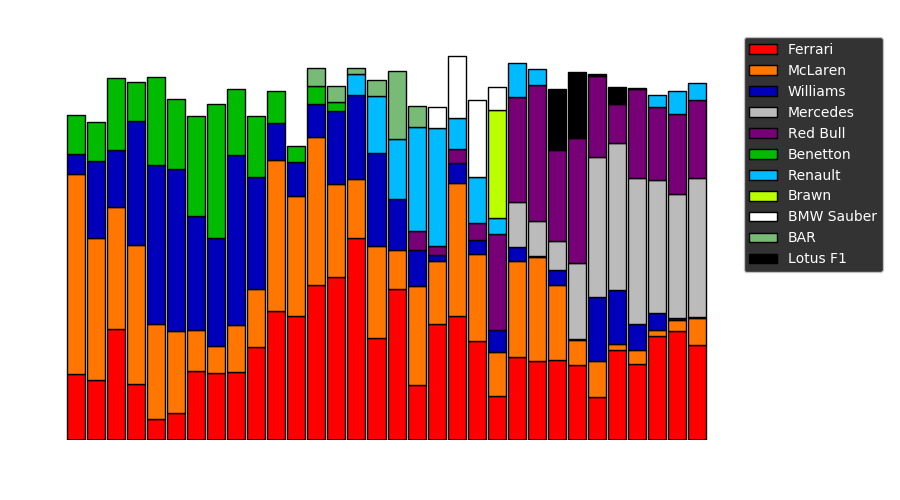
clockwork orange
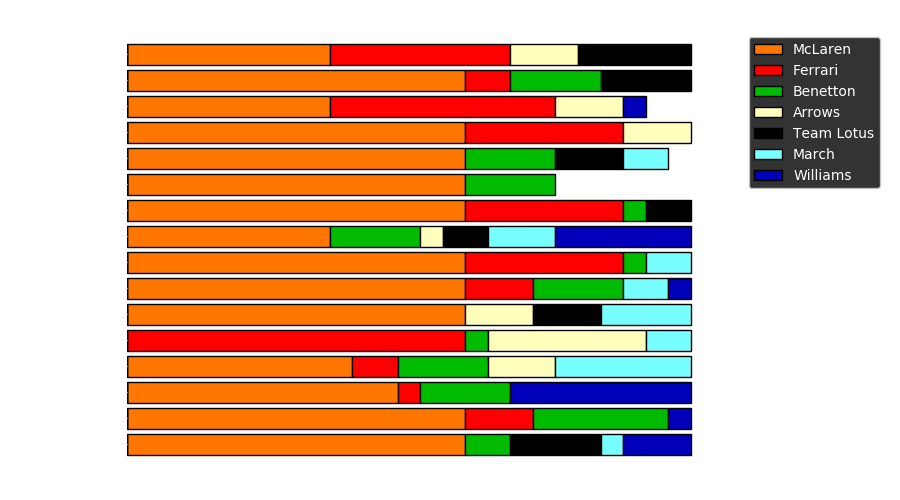
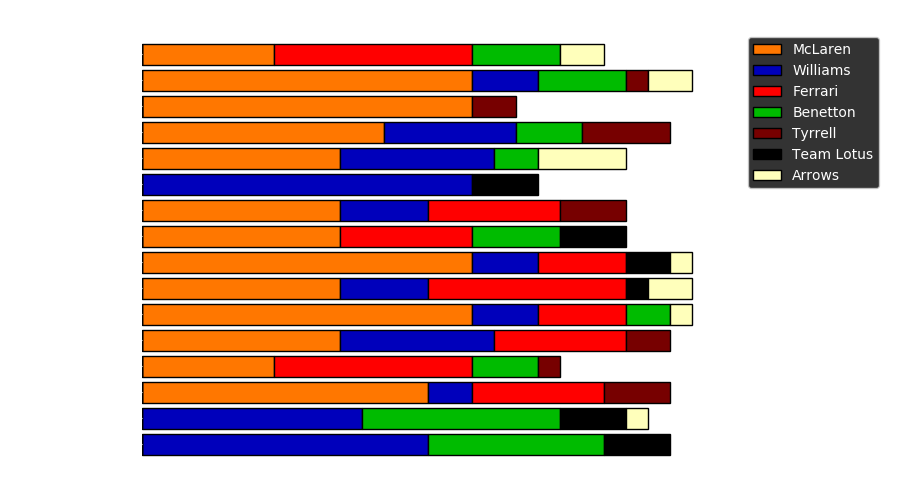
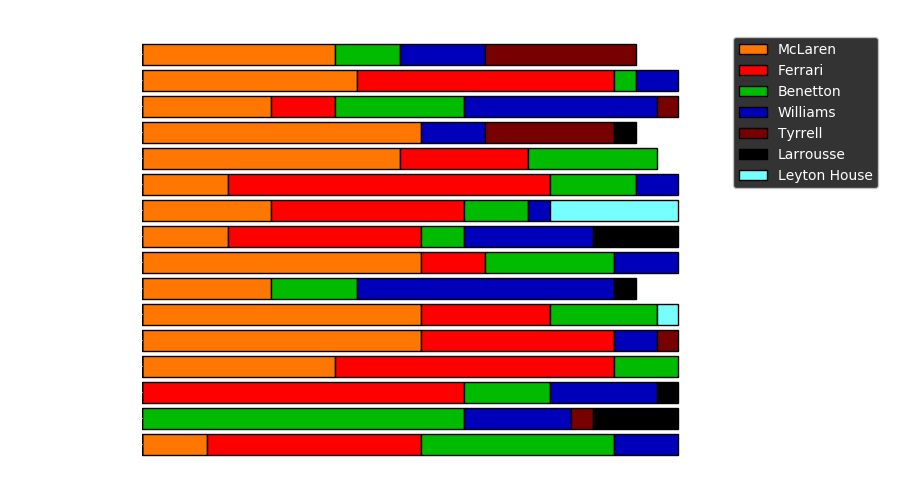
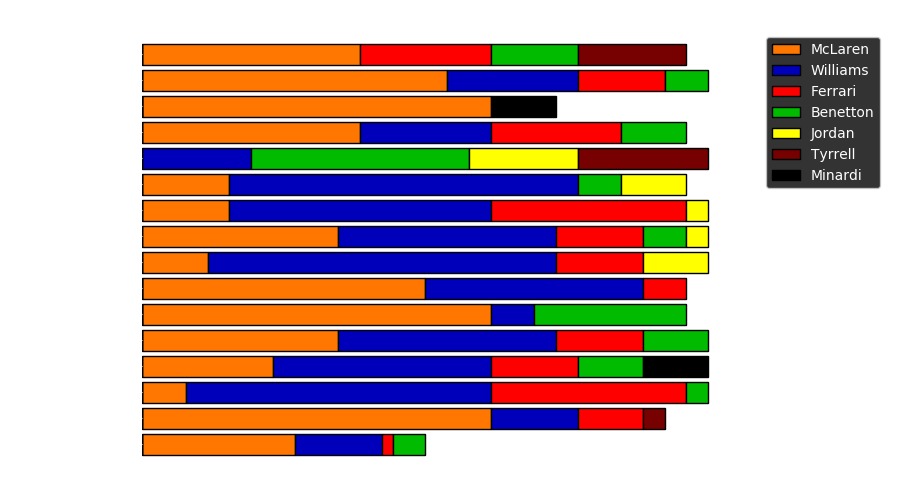
blue chips
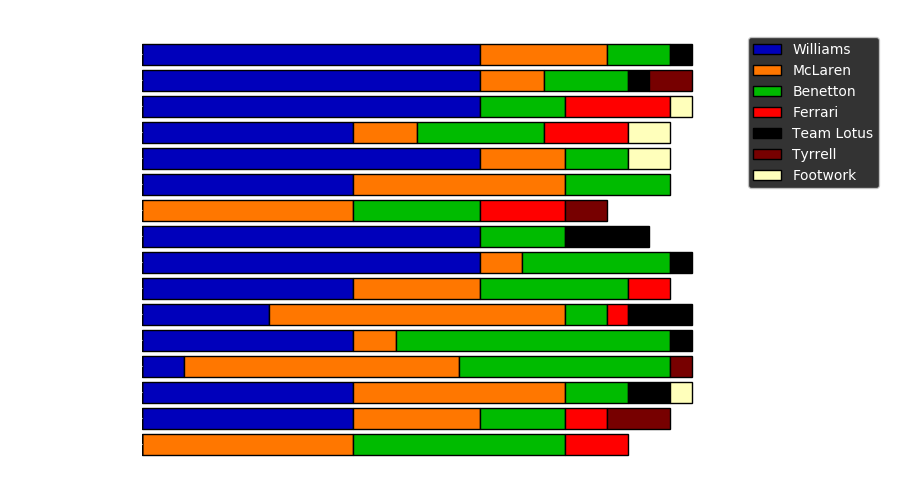
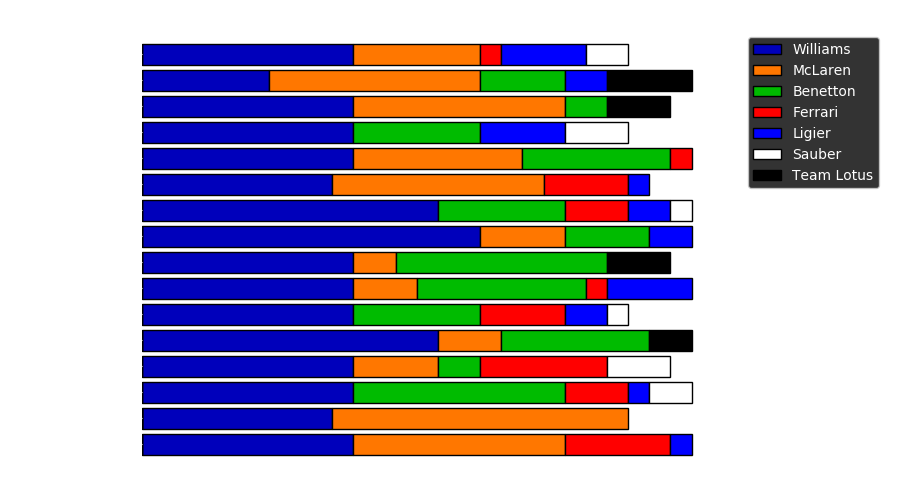
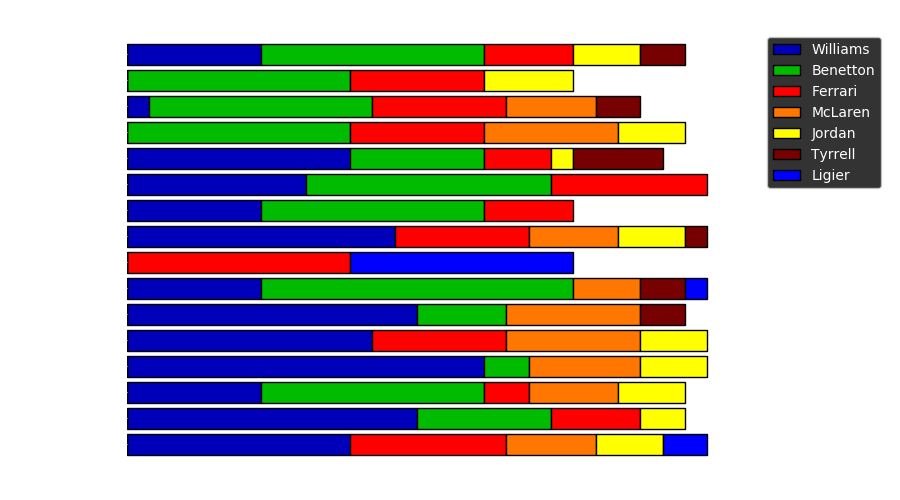

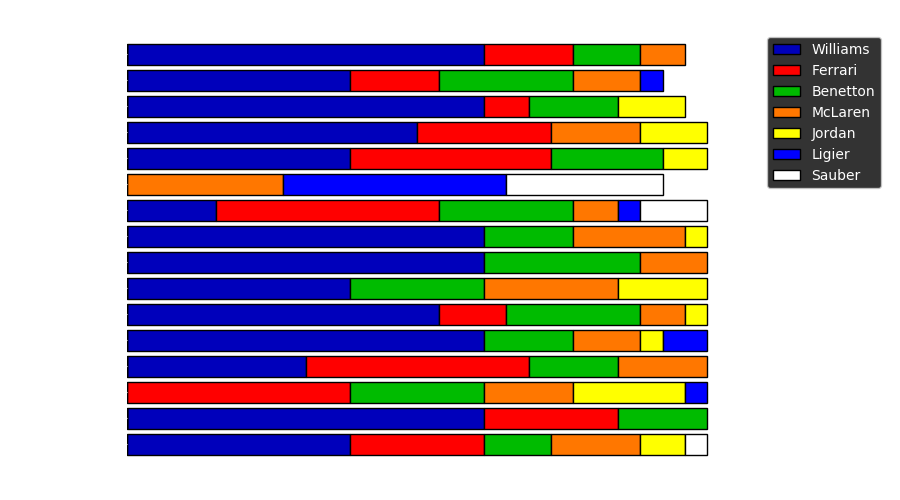
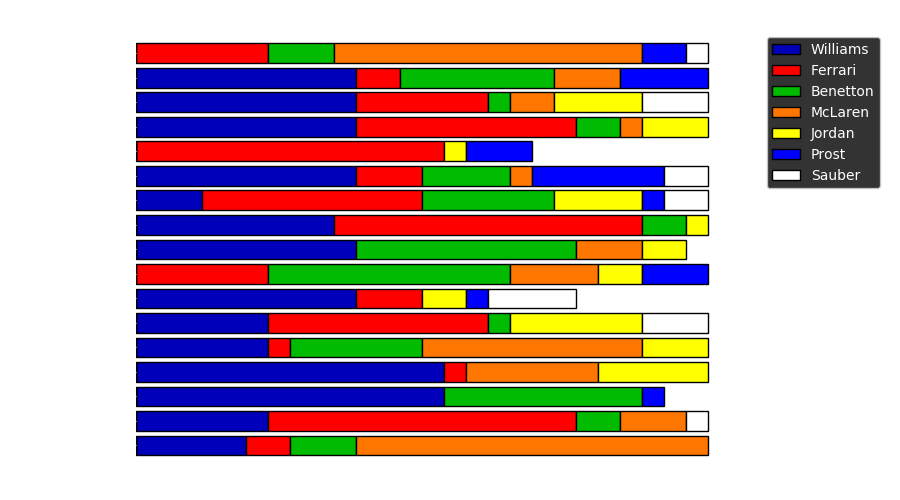
seeing red
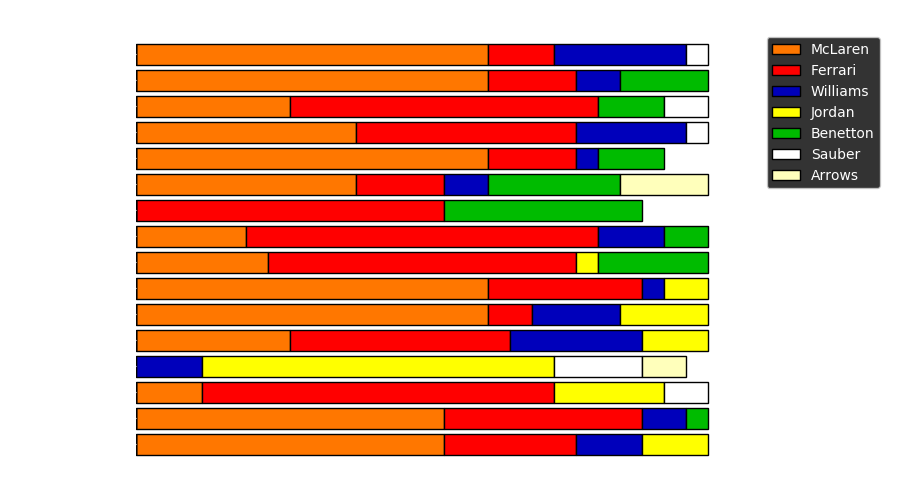
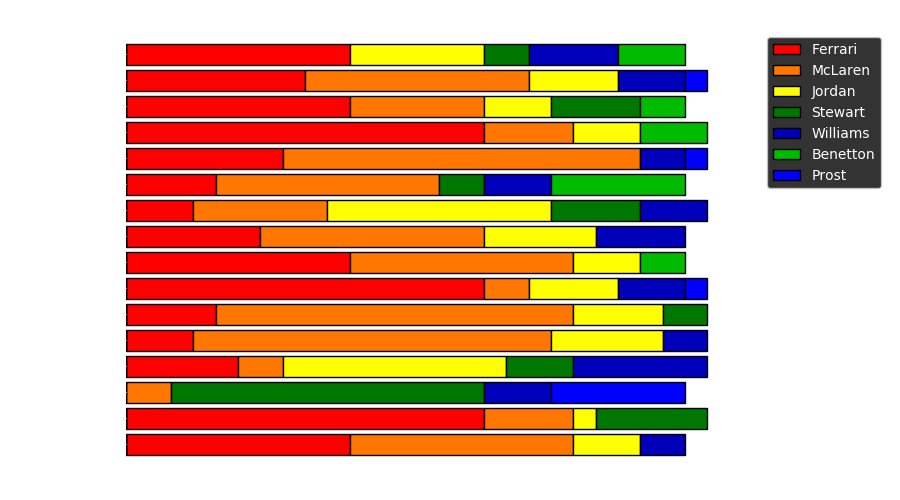
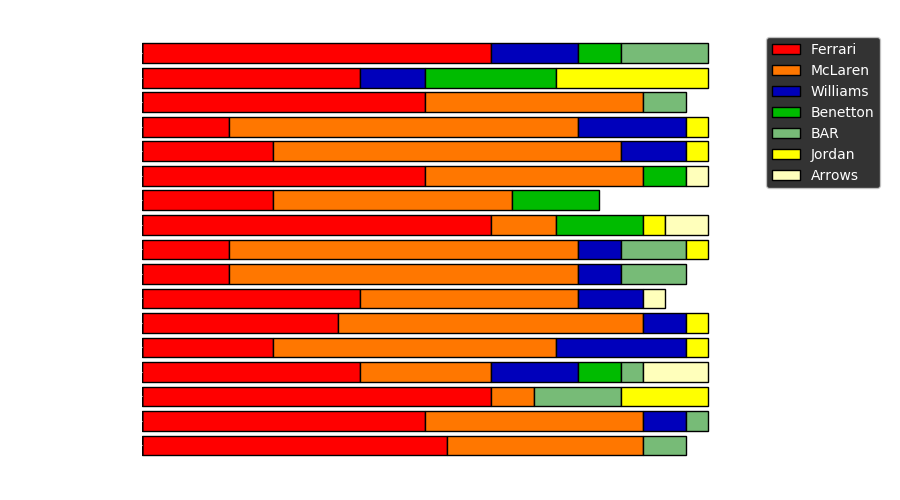
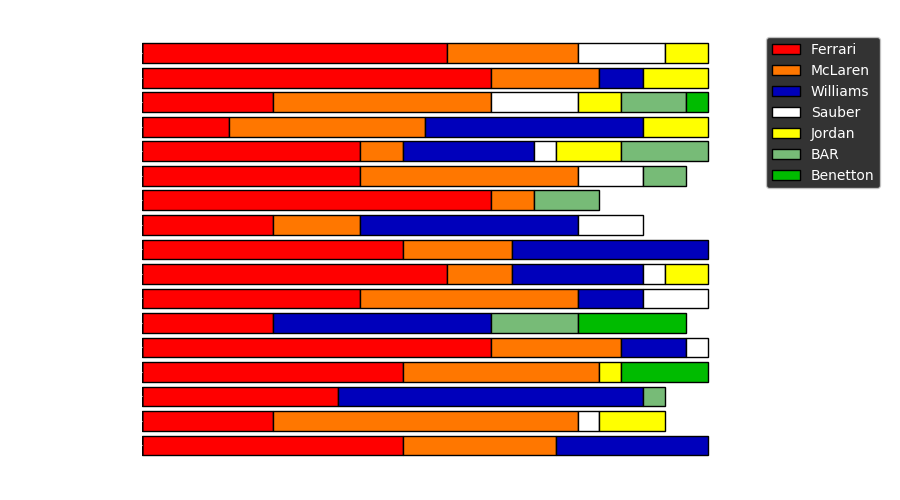
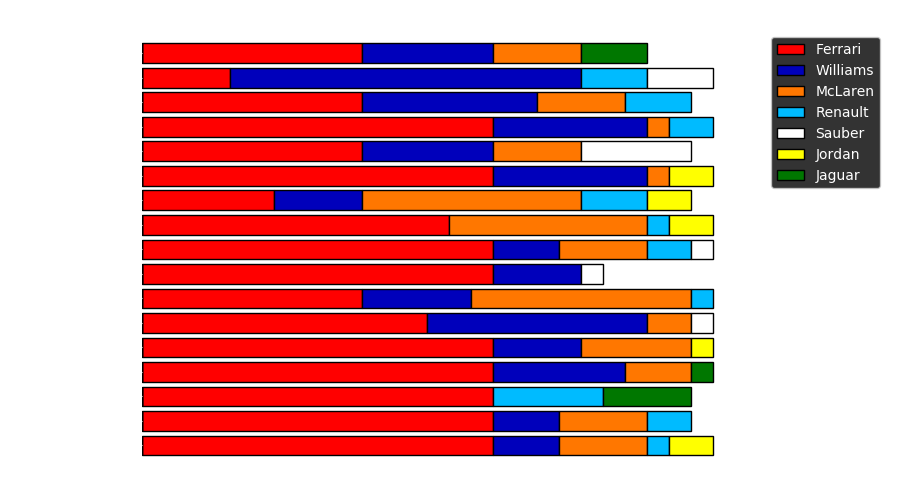
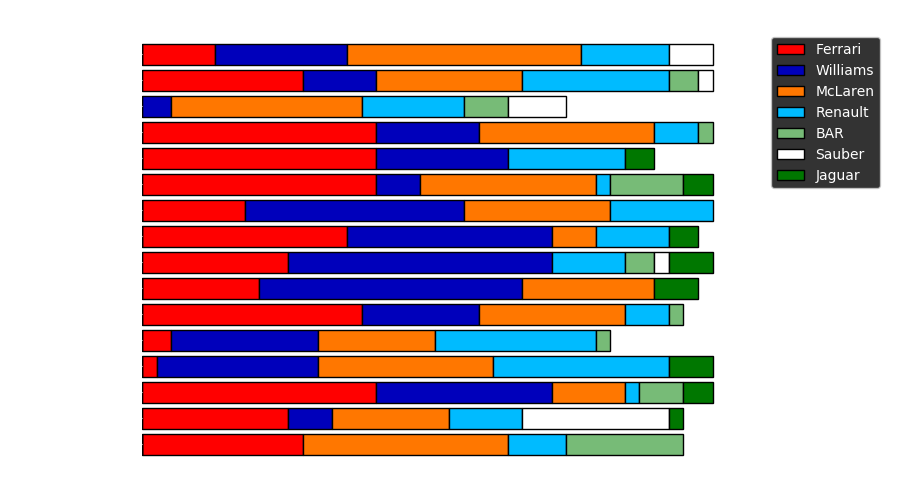
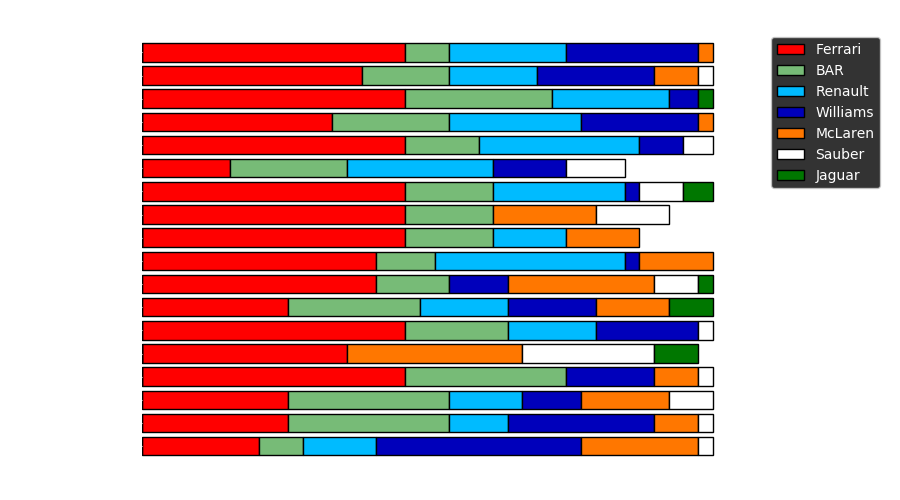
allons-y
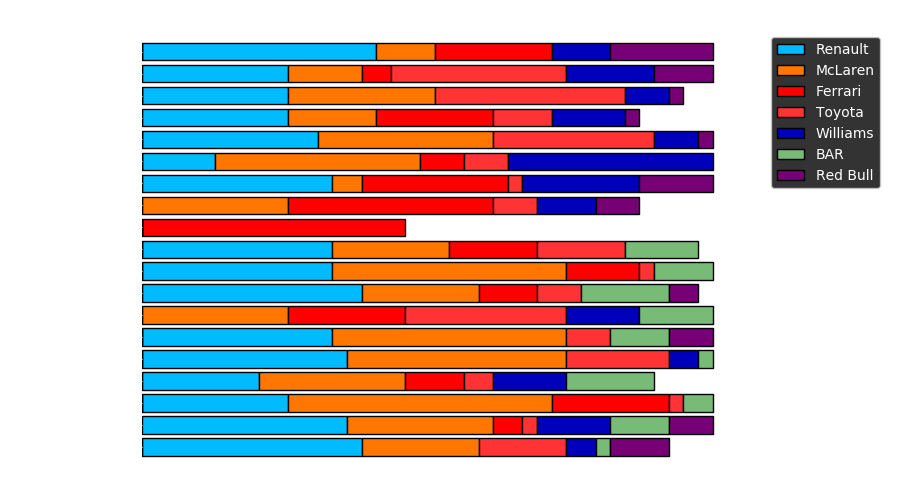
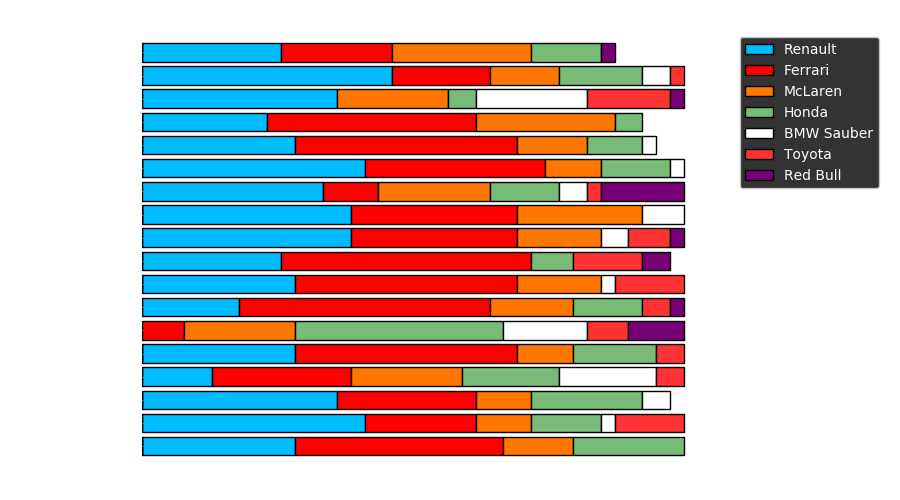
un ritornello
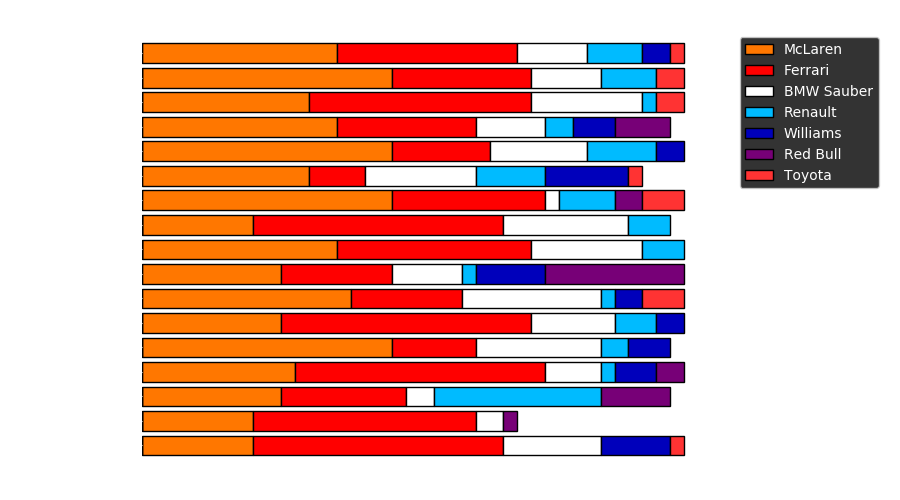
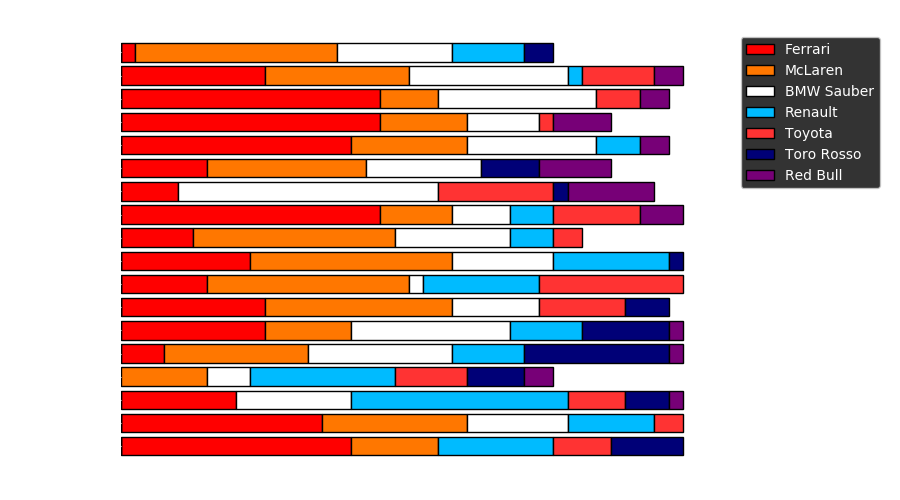
raging bulls
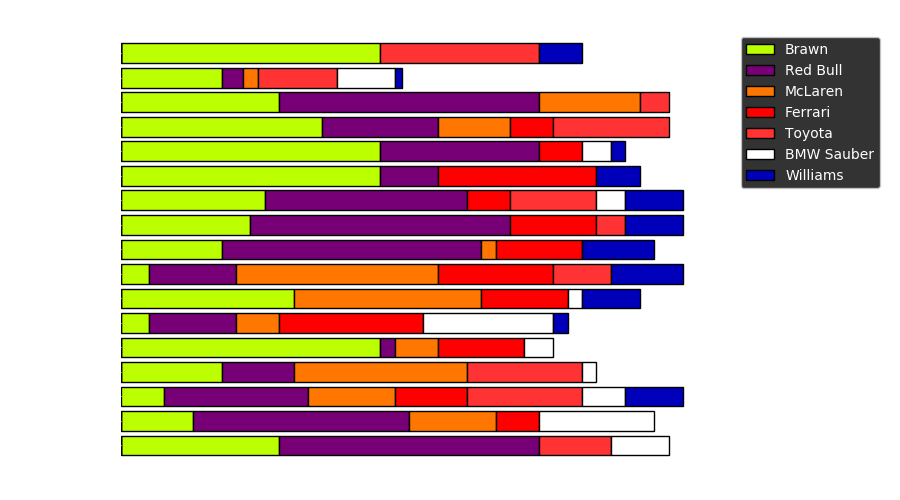
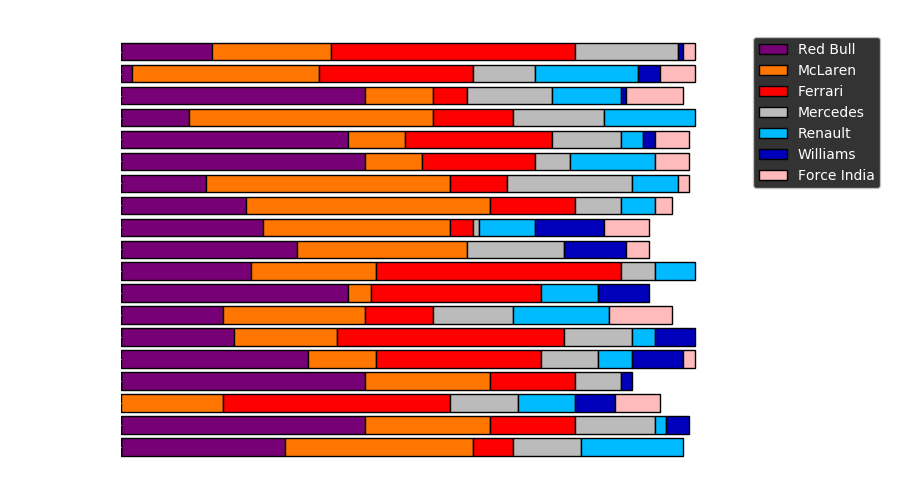
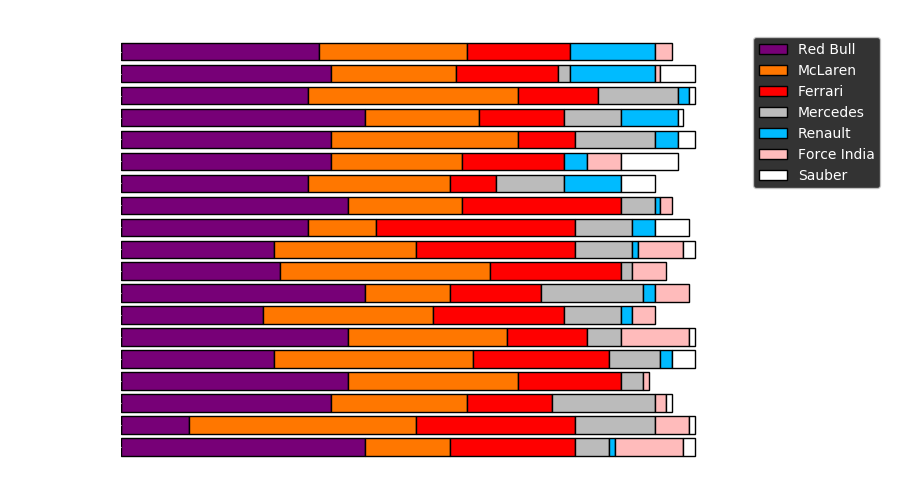
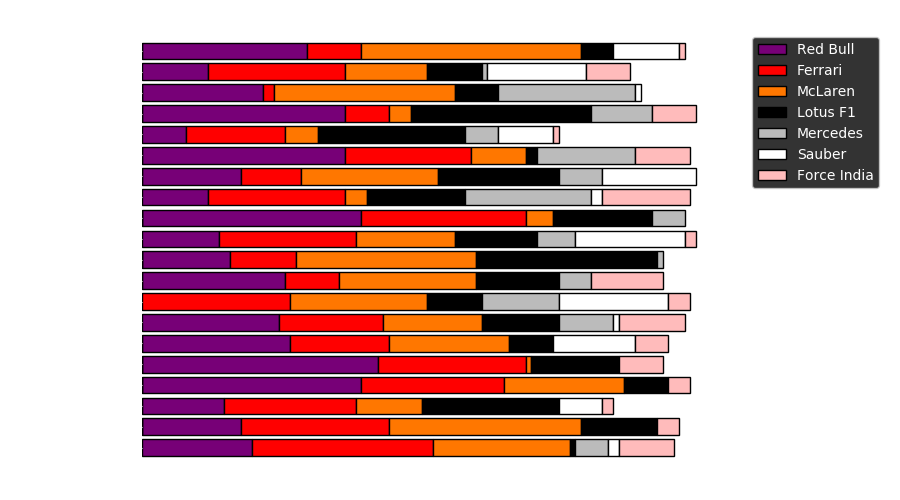

hammer time
